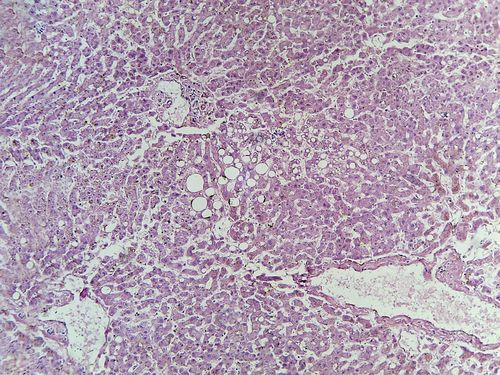Diabetes Treatment Found In Bile Acids; New Line Of Diabetes And Obesity Medication

Obesity and type 2 diabetes are on the rise, and the desperation to find a way to help millions of Americans process the sugar and insulin in their body has led researchers to explore the gut for answers. A team of researchers from Italy and the Netherlands has discovered how the bile acid can stop insulin sensitivity that causes diabetes. Their findings appear in the Journal of Clinical Investigation.
There are 78.6 million obese Americans in the country today — that’s more than one-third of the nation’s adult population. It’s undeniable the country is experiencing an obesity epidemic coupled with life-threatening obesity-related conditions, including heart disease, stroke, type 2 diabetes, and certain types of cancer. Diabetes is the seventh leading cause of death in the U.S., and out of type 1 and type 2 diabetes, 90 percent of diabetics have type 2, according to the American Diabetes Association.
Those with type 2 diabetes have a difficult time using or producing insulin to balance all of the sugary glucose in the blood system. At first, the pancreas works overtime and struggles to meet the body’s high demands of insulin to handle all of the unhealthy foods and extra calories entering into the body. Over time, the pancreas fails to meet demands and the high blood glucose levels eventually damage the eyes, kidney, nerves, and heart. Healthy diet and exercise can help curb the struggle, but a person is usually put on a regimented medication for life.
One of type 2 diabetics’ greatest struggles is having to live with chronic inflammation that builds up in their fat tissues. Inflammation is caused by immune system cells called macrophages, which worsen the situation by making it difficult for fat cells to respond to insulin, also known as “insulin resistance.” When the body cannot use insulin efficiently, the sugar levels cannot be regulated and the liver becomes unable to process properly.
Researchers have discovered a receptor that can be activated by the chemicals in our bile and block out these macrophages. Bile acids were once thought to only help with digesting food in the small intestine, but recent studies have found they enter the bloodstream and act like hormones. The key receptor TGR5 can block signals that attract the inflammation-causing macrophages. Not only was TGR5 able to block those signals, but they were also able to trigger a cascade of cells that reduced the amount of macrophages that had accumulated.
The ability to treat inflammation doesn’t stop at type 2 diabetes. The discovery has rolled out a new carpet of exploration for anti-obesity and diabetes drugs. "Of course, we don't want to use bile acids for treatment of diabetes," the study’s lead author Alessia Perino, a genetics researcher at the University of Amsterdam, said in a press release. "We are very interested in finding molecules that can mimic the effects of bile acids, and we have already discovered several small molecules that can do that."
Source: Perino A, Pols TWH, Nomura M, Stein S, Pellicciari R, and Schoonjans K. TGR5 reduces macrophage migration through mTOR-induced C/EBPβ differential translation. Journal of Clinical Investigation. 2014.
Published by Medicaldaily.com



























